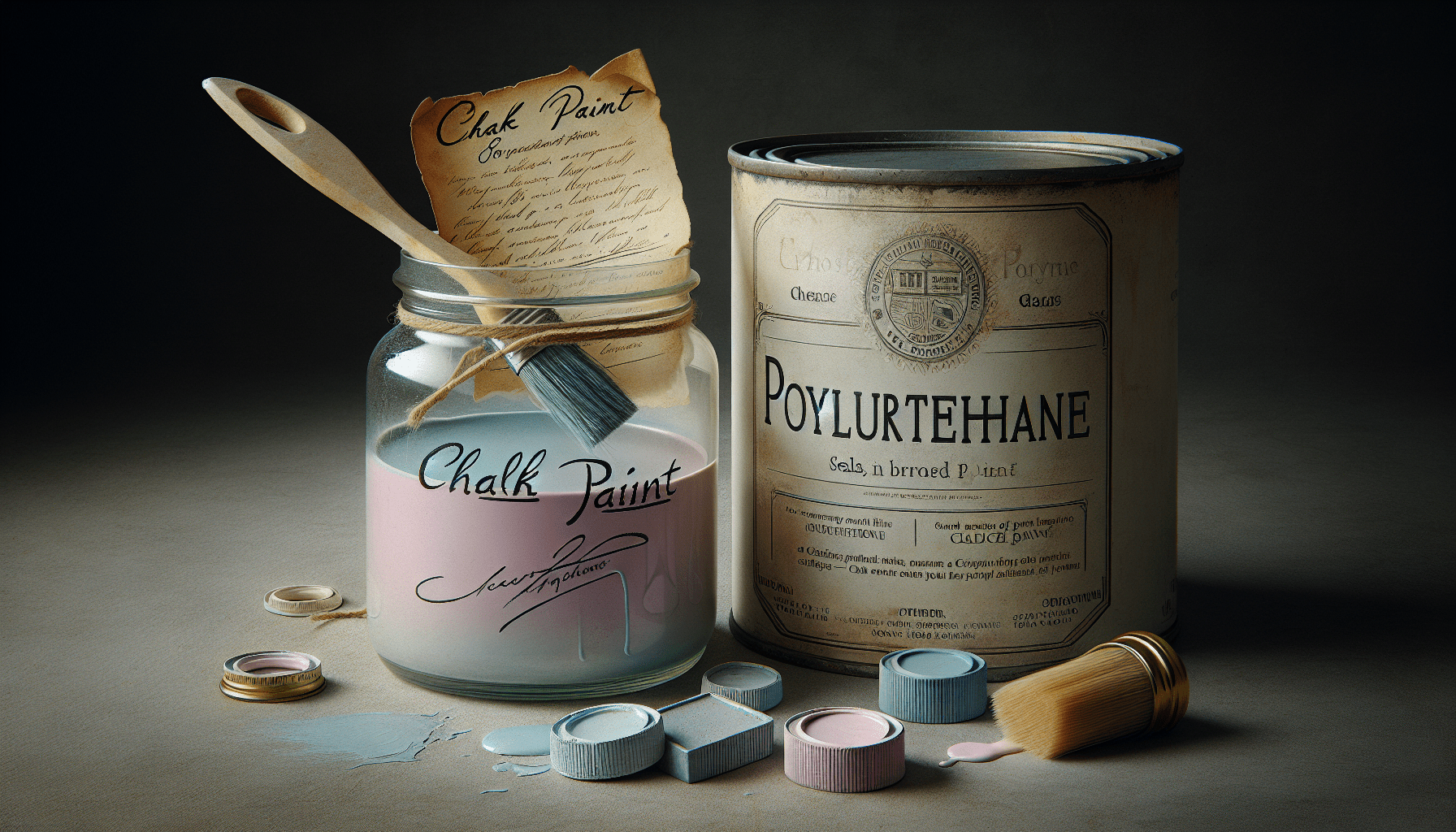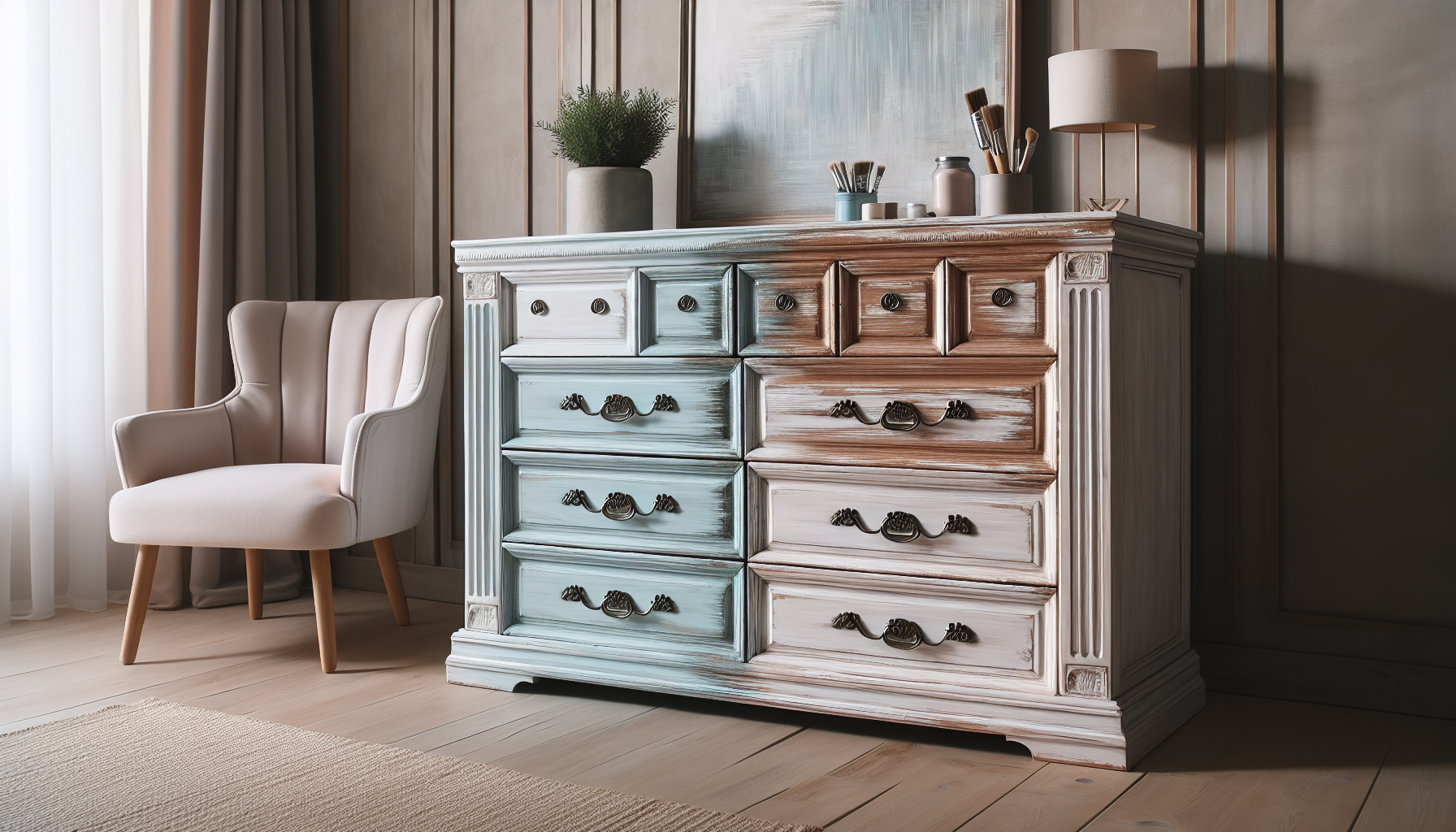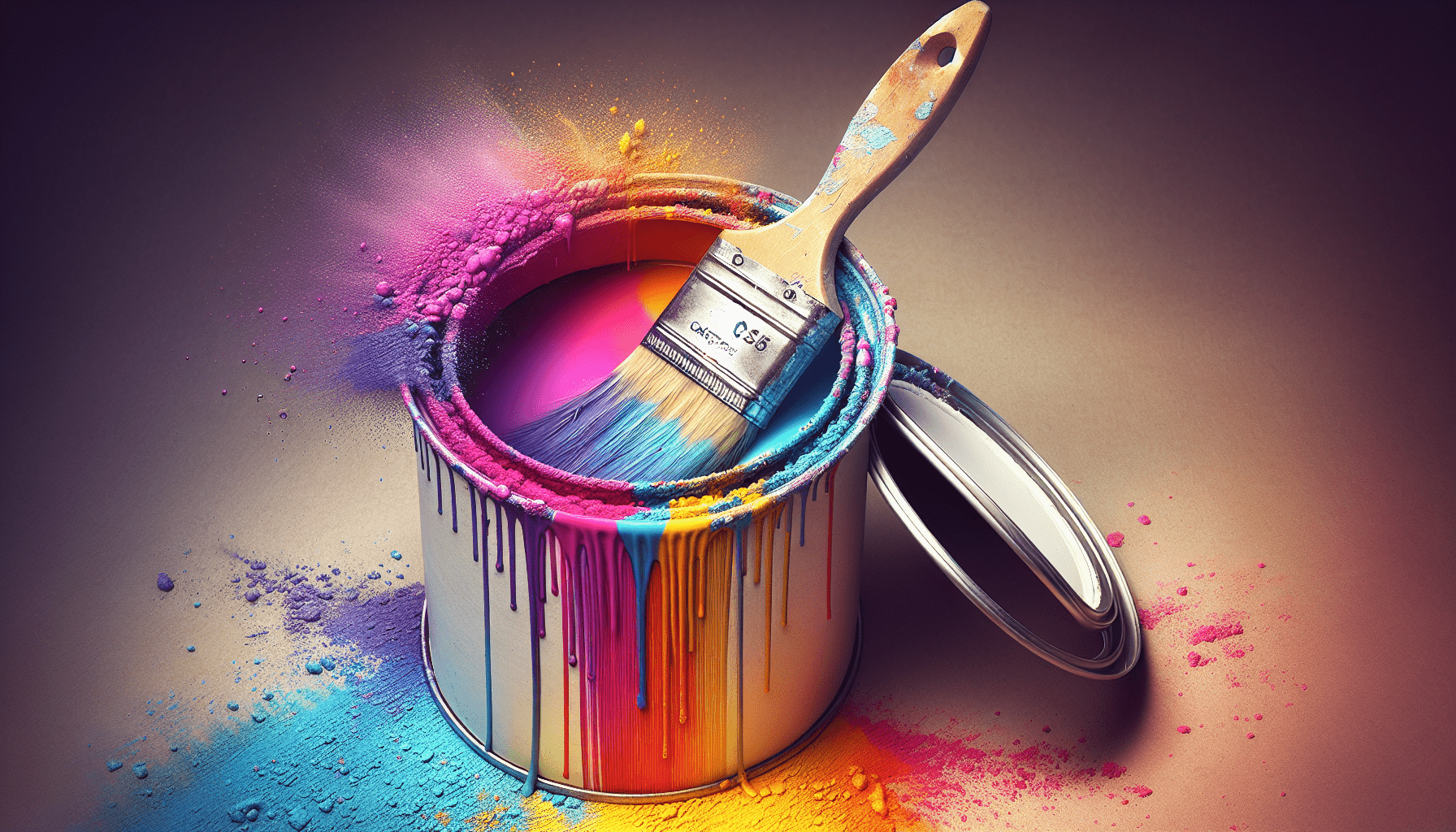In the world of chalk paint, the question of whether or not you can effectively seal it with polyurethane is a common one. While some may believe that the two materials are incompatible, others have successfully used polyurethane as a sealant for their chalk paint projects. Understanding the proper techniques and considerations for using polyurethane as a sealant for chalk paint can help you achieve a professional finish that is not only durable but also visually pleasing. By following the right steps and utilizing high-quality products, you can confidently seal your chalk paint creations with polyurethane for a long-lasting and beautiful result.
Can You Seal Chalk Paint With Polyurethane
You may be asking yourself, “Can you seal chalk paint with polyurethane?” This is a common question among DIY enthusiasts and furniture painters. In this article, we will delve into the compatibility of chalk paint and polyurethane as a sealant. We will explore the benefits and drawbacks of using polyurethane with chalk paint and provide you with all the information you need to make an informed decision.
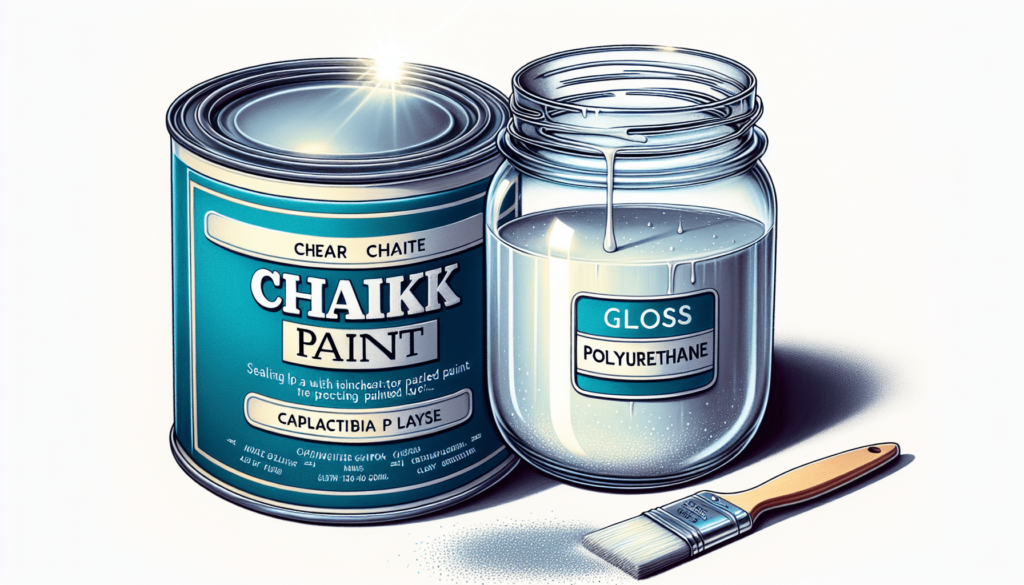
Understanding Chalk Paint
Chalk paint is a popular type of paint known for its matte, chalky finish. It is widely used for furniture painting and other DIY projects due to its ease of use and ability to adhere to various surfaces without the need for priming or sanding. Chalk paint is also known for its fantastic coverage, allowing you to achieve a beautiful, velvety finish with just a few coats.
Chalk paint is known for its unique finish and its ability to give furniture a vintage, shabby chic look. It is also incredibly versatile, allowing you to experiment with different painting techniques like distressing and layering.
The Benefits of Using Chalk Paint
One of the main advantages of using chalk paint is its ease of application. Chalk paint is thick and creamy, making it easy to work with and less prone to drips and splatters. It also dries quickly, allowing you to complete projects in a shorter amount of time.
Another benefit of chalk paint is its ability to adhere to a variety of surfaces, including wood, metal, and even glass. This versatility makes chalk paint an excellent choice for upcycling old furniture or adding a touch of color to thrift store finds.
The Drawbacks of Using Chalk Paint
While chalk paint has many benefits, it also has some drawbacks to consider. Chalk paint tends to have a matte finish, which can be prone to chipping and scratching, especially on high-traffic surfaces like tabletops or kitchen cabinets. Additionally, chalk paint can be more expensive than traditional latex or acrylic paints, which may be a consideration for those on a budget.
Another drawback of chalk paint is that it can be more challenging to clean than other types of paint. Because of its porous texture, chalk paint can trap dirt and grime, making it difficult to remove stains without damaging the finish.
What is Polyurethane?
Polyurethane is a clear, durable sealant that is commonly used to protect wood surfaces from scratches, moisture, and UV rays. It comes in both oil-based and water-based formulas, with each type offering its own set of benefits and drawbacks.
Polyurethane is known for its high level of protection and durability, making it an excellent choice for sealing furniture and other projects that will be subjected to heavy use. It is also relatively easy to apply, either with a brush or a spray gun, and dries to a clear, glossy finish that enhances the natural beauty of the wood.
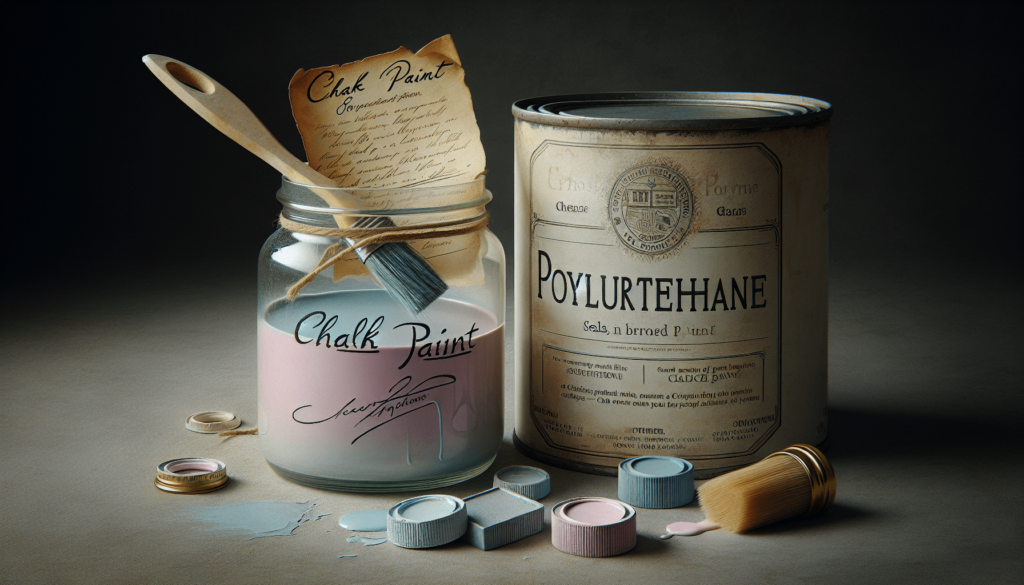
The Benefits of Using Polyurethane as a Sealant
One of the main advantages of using polyurethane as a sealant is its high level of protection. Polyurethane forms a tough, moisture-resistant barrier that helps to prevent scratches, stains, and other damage to the underlying surface. This makes polyurethane an excellent choice for sealing surfaces that are exposed to high levels of wear and tear, such as tabletops, floors, and kitchen cabinets.
Another benefit of polyurethane is its versatility. Polyurethane can be used on a variety of surfaces, including wood, metal, and painted surfaces, making it a versatile choice for a wide range of projects. It is also available in a range of finishes, from glossy to satin, allowing you to customize the look of your project to suit your tastes.
Can You Seal Chalk Paint With Polyurethane?
Now that we have explored the characteristics of chalk paint and polyurethane, let’s address the question: Can you seal chalk paint with polyurethane? The short answer is yes, you can seal chalk paint with polyurethane. However, there are some important considerations to keep in mind when using polyurethane as a sealer over chalk paint.
One of the main concerns when sealing chalk paint with polyurethane is the compatibility of the two products. Chalk paint has a porous, matte finish, while polyurethane has a glossy, plastic-like finish. This contrast in finishes can create adhesion issues, as the smooth surface of the polyurethane may have difficulty adhering to the chalk paint.
How to Seal Chalk Paint With Polyurethane
If you decide to seal your chalk paint project with polyurethane, there are a few steps you can take to ensure that the two products are compatible and will adhere properly.
-
Lightly sand the chalk paint: Before applying polyurethane, lightly sand the surface of the chalk paint with fine-grit sandpaper to create a smooth, even surface for the polyurethane to adhere to.
-
Clean the surface: After sanding, clean the surface of the chalk paint with a damp cloth to remove any dust or debris. Allow the surface to dry completely before applying polyurethane.
-
Apply a primer (optional): If you are concerned about adhesion issues, you can apply a bonding primer to the surface of the chalk paint before applying polyurethane. This will help to create a stronger bond between the two products and prevent peeling or chipping.
-
Apply the polyurethane: Using a high-quality brush or sprayer, apply a thin, even coat of polyurethane to the surface of the chalk paint. Be sure to follow the manufacturer’s instructions for the best results.
-
Sand between coats: If you are applying multiple coats of polyurethane, be sure to sand the surface lightly between coats to ensure a smooth finish and proper adhesion.
Pros and Cons of Sealing Chalk Paint With Polyurethane
When considering whether to seal your chalk paint project with polyurethane, it is essential to weigh the pros and cons of using this combination of products. Here are some key points to consider:
Pros
- Enhanced durability: Polyurethane provides a strong, protective barrier that can help to prevent damage to the underlying chalk paint.
- Added moisture resistance: Polyurethane is moisture-resistant, making it an excellent choice for surfaces that may be exposed to spills or other moisture.
- Customizable finish: Polyurethane comes in a variety of finishes, allowing you to customize the final look of your project.
Cons
- Adhesion issues: Polyurethane may have difficulty adhering to the porous, matte surface of chalk paint, leading to peeling or chipping.
- Altered appearance: Polyurethane has a glossy finish that may alter the appearance of the chalk paint, potentially affecting the desired look of the project.
- Potential yellowing: Some polyurethane products may yellow over time, especially when exposed to UV light, which can affect the color of the chalk paint.
Alternative Sealants for Chalk Paint
If you are hesitant to use polyurethane as a sealant for your chalk paint project, there are several alternative options to consider. Each of these sealants offers its benefits and drawbacks, so be sure to research and test different products to find the best solution for your project.
Wax
One popular alternative to polyurethane is wax, which is a natural, matte finish sealant that can enhance the color and texture of chalk paint. Wax is relatively easy to apply, either with a brush or a soft cloth, and provides a smooth, velvety finish. However, wax may require more frequent reapplication than polyurethane and may not offer the same level of protection.
Polycrylic
Polycrylic is a water-based sealant that dries to a clear, matte finish. It is easy to apply and clean up, making it a popular choice for DIY projects. Polycrylic provides a durable, protective barrier that can help to prevent damage to the underlying chalk paint. However, like polyurethane, polycrylic may have adhesion issues when applied over chalk paint.
Lacquer
Lacquer is a fast-drying, high-gloss sealant that provides a durable, protective finish. Lacquer is easy to apply, either with a brush or a sprayer, and dries to a hard, glossy finish. However, lacquer can be challenging to work with and may require careful application to avoid drips and runs.
Conclusion
In conclusion, while you can seal chalk paint with polyurethane, there are some important considerations to keep in mind when using these two products together. By following the steps outlined in this article and weighing the pros and cons of sealing chalk paint with polyurethane, you can make an informed decision about the best sealant for your project. Be sure to experiment with different sealants and application techniques to find the best solution for your specific needs and preferences.
